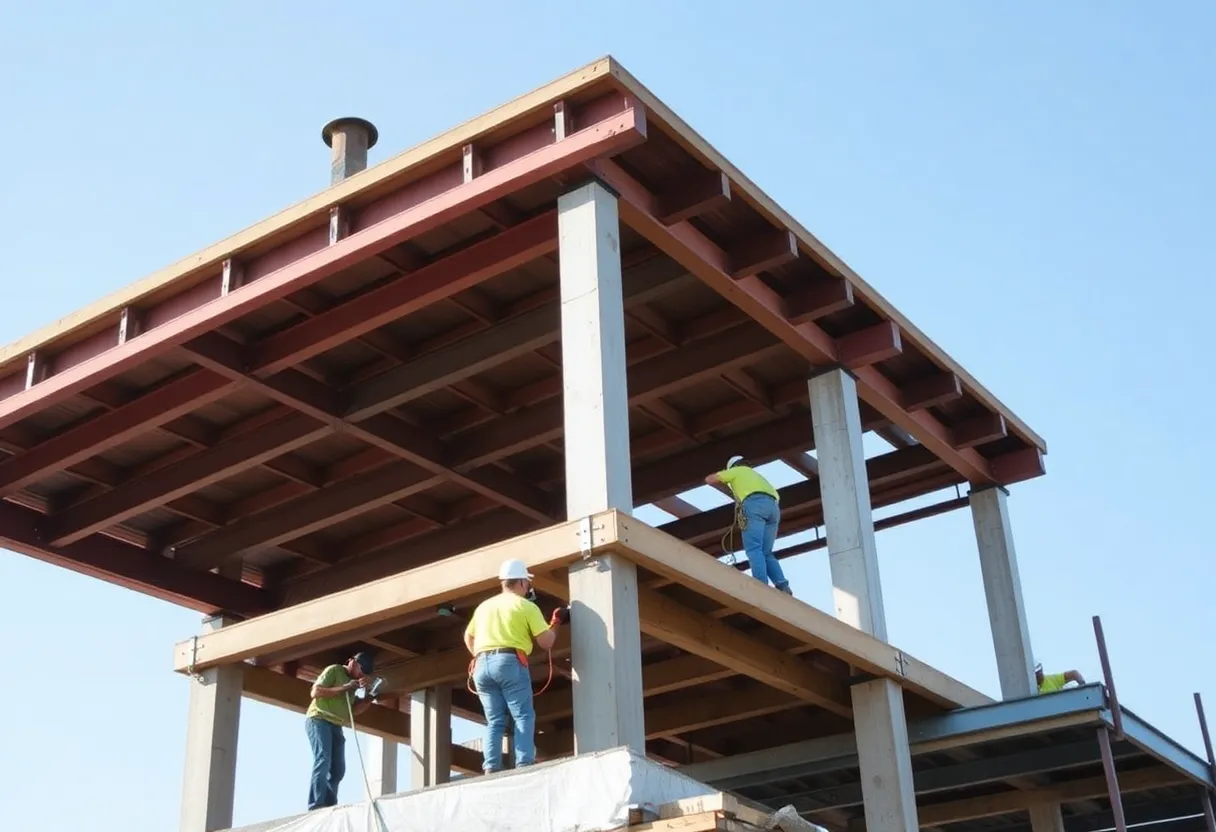Accounting Solutions for Architects: Streamlining Financial Processes
In the dynamic world of architecture, where creativity meets precision, managing finances can feel like designing a building without blueprints. Modern architecture firms face unique financial complexities, from juggling multiple project budgets to navigating tight profit margins. These challenges demand more than generic accounting solutions; they require tailored systems that understand the nuances of the architectural profession. This blog post explores how specialized accounting solutions can streamline financial processes for architects, ensuring that every project is not only a masterpiece of design but also a pillar of financial health.
Core Areas for Streamlined Financial Management
1. Project-Based Accounting: Keeping Every Project on Budget
Pain Point: Architects often manage multiple projects simultaneously, each with its own financial requirements. Tracking expenses, revenues, and profits for each project manually can be overwhelming and error-prone, leading to cost overruns and reduced profitability.
Solution: Tailored accounting software like Monograph, Deltek Vision, or CMiC offers project-based accounting features. These tools allow firms to create separate financial ledgers for each project, track time and expenses accurately, and generate project-specific reports. By integrating with project management software, these solutions provide a holistic view of each project’s financial health.
ROI Metric: Firms using project-based accounting software can save up to 30% of the time previously spent on financial tracking, allowing staff to focus more on design and client services. For example, a mid-sized firm managing 10 projects could save approximately 15 hours per week, translating to significant cost savings.
2. Cash Flow Management: Ensuring Financial Fluidity
Pain Point: Irregular cash flows are common in architecture firms due to the phased nature of project payments. This can lead to cash shortages during project lulls or delays in receiving payments, impacting operational stability.
Solution: Accounting software with cash flow management capabilities, such as Bonsai Tax, ZarMoney, or CMiC, automates invoicing, sends payment reminders, and provides real-time cash flow forecasts. These features help firms maintain a steady cash flow, plan for expenses, and avoid liquidity issues.
Vignette: Imagine an architecture firm awaiting payment for a major project milestone. With automated invoicing and reminders from ZarMoney and CMiC, the firm secures payment 10 days earlier than usual, enabling it to cover payroll and invest in new project bids without resorting to costly loans.
3. Financial Reporting: Gaining Clarity on Firm Performance
Pain Point: Generating comprehensive financial reports manually is time-consuming and prone to inaccuracies. Architects need clear, timely reports to make informed decisions about project viability and firm growth.
Solution: Modern accounting software offers customizable reporting tools that generate detailed financial statements, profit and loss reports, and balance sheets with ease. Software like QuickBooks Online, Sage Intacct, or CMiC can integrate with other business tools to provide a unified view of financial data.
ROI Metric: Automated reporting can save firms approximately 10-15 hours per month, freeing up time for strategic planning. Accurate, up-to-date reports also enhance decision-making, potentially leading to better project selection and resource allocation.
4. Tax Compliance & Reporting: Navigating the Tax Landscape
Pain Point: Tax compliance for architecture firms involves dealing with various taxes, including income tax, sales tax, and payroll taxes, which can be complex, especially for firms operating across different regions.
Solution: Accounting solutions tailored for architects often include tax preparation and compliance features. Firms can benefit from automated tax calculations, electronic filing, and integration with tax authorities’ systems. Consulting services from firms like Aldrich Advisors, PKF O’Connor Davies, or supported through CMiC provide expert guidance on tax optimization and compliance.
ROI Metric: Proper tax management can lead to significant savings by avoiding penalties and maximizing deductions. For example, a firm might save 5-10% on tax liabilities through strategic tax planning, potentially saving thousands annually.
5. Time & Billing Management: Maximizing Billable Hours
Pain Point: Accurately tracking time spent on different projects and billing clients accordingly is crucial for architects. Manual time tracking can be inefficient and lead to billing discrepancies, resulting in lost revenue.
Solution: Accounting software with robust time tracking features, such as My Count Solutions, ZarMoney, or CMiC, allows architects to log time directly to specific projects. These systems also automate invoice creation based on time entries, ensuring accurate and timely billing.
Vignette: A small architecture firm struggled with manual time tracking, often underbilling clients. After implementing My Count Solutions and CMiC, the firm increased its billable hours by 8%, adding $10,000 to annual revenue without increasing workload.
Key Features to Prioritize When Selecting Accounting Software
Choosing the right accounting software is critical for architecture firms. Here are the essential features to look for:
- Integration with Project Management Tools: Seamless integration ensures financial data aligns with project progress, providing a comprehensive view of each project’s status.
- Automation Capabilities: Automate repetitive tasks like invoicing, payment reminders, and report generation to save time and reduce errors.
- Robust Time Tracking: Accurate time tracking is vital for project costing and billing. Choose software that allows easy logging of time and allocation to specific projects.
- Customizable Reporting: Generate custom reports tailored to your firm’s needs for monitoring financial performance and meeting regulatory requirements.
Looking Ahead: The Role of Emerging Technologies
The future of accounting for architecture firms is being shaped by emerging technologies that promise to enhance efficiency and provide deeper insights:
- Artificial Intelligence (AI): AI can automate routine tasks like data entry and reconciliation, freeing up staff for strategic activities. Machine learning algorithms can analyze historical data to predict cash flows and project profitability, aiding in better financial planning.
- Cloud-Based Systems: Cloud accounting solutions offer real-time access to financial data from any location, facilitating collaboration among team members and with clients. They also provide automatic backups and enhanced security, ensuring data integrity and compliance.
By embracing these technologies, architecture firms can stay ahead of the curve, improving operational efficiency and gaining a competitive edge.
FAQ: Accounting Solutions for Architects
What is project-based accounting, and why is it important for architects?
How can accounting software improve cash flow management in architecture firms?
What are the key features to look for in accounting software for architects?
How can AI enhance accounting processes for architecture firms?
Is cloud-based accounting software secure for architecture firms?
A Deeper Dive: Organizations Mentioned
- Monograph: A leading provider of accounting software tailored for architecture firms, offering project-based accounting and integration with project management tools. X: @MonographHQ
- Deltek: Specializes in software solutions for project-based businesses, including architecture firms, with a focus on financial management and project accounting. X: @Deltek
- CMiC: Provides comprehensive construction and architecture financial management, project accounting, and field service solutions. X: @CMiC
- QuickBooks Online: A widely used cloud-based accounting platform that, when paired with industry-specific tools, provides comprehensive financial solutions for architecture firms. X: @QuickBooks
- Bonsai Tax: Offers reliable accounting software designed for architects, freelancers, and self-employed workers, with features like expense tracking and tax reminders. X: @hellobonsai
- ZarMoney: Provides accounting software with automated billing, payment reminders, and professional quote creation for architecture firms. X: @ZarMoney
- My Count Solutions: Offers project accounting software tailored for project-based businesses, with robust time tracking and billing features. X: @MyCountSolution
- Sage Intacct: A cloud-based financial management solution offering customizable reporting and integration for architecture firms. X: @SageIntacct
- Aldrich Advisors: Provides accounting, tax planning, and consulting services for architects and engineers, specializing in the built industry. X: @AldrichAdvisors
- PKF O’Connor Davies: Offers advisory, tax, and financial statement services for architecture and engineering firms, with deep industry expertise. X: @PKFOConnorDavies
Summary Table: Benefits of Accounting Solutions
| Core Area | Pain Point | Solution | ROI/Benefit |
|---|---|---|---|
| Project-Based Accounting | Manual tracking of multiple projects is error-prone | Software like Monograph, Deltek Vision, or CMiC tracks project finances separately | Saves 20-30% of financial tracking time |
| Cash Flow Management | Irregular cash flows from phased payments | Automated invoicing and forecasting with ZarMoney and CMiC | Improves cash flow predictability by 15-20% |
| Financial Reporting | Manual reporting is time-consuming | Customizable reports with QuickBooks Online, Sage Intacct, or CMiC | Saves 10-15 hours/month on reporting |
| Tax Compliance | Complex tax regulations across regions | Automated tax features and expert services from Aldrich Advisors, PKF O’Connor Davies, and CMiC | Saves 5-10% on tax liabilities |
| Time & Billing | Inefficient manual time tracking | Automated time tracking with My Count Solutions, ZarMoney, and CMiC | Increases billable hours by 5-10% |
Author: Construction FL News
The FLORIDA STAFF WRITER represents the experienced team at constructionflnews.com, your go-to source for actionable local news and information in Florida and beyond. Specializing in "news you can use," we cover essential topics like product reviews for personal and business needs, local business directories, politics, real estate trends, neighborhood insights, and state news affecting the area—with deep expertise drawn from years of dedicated reporting and strong community input, including local press releases and business updates. We deliver top reporting on high-value events such as the Florida Build Expo, major infrastructure projects, and advancements in construction technology showcases. Our coverage extends to key organizations like the Associated Builders and Contractors of Florida and the Florida Home Builders Association, plus leading businesses in construction and legal services that power the local economy such as CMiC Global and Shutts & Bowen LLP. As part of the broader network, including constructioncanews.com, constructionnynews.com, and constructiontxnews.com, we provide comprehensive, credible insights into the dynamic construction landscape across multiple states.





